by nicole maria, a parisian new-yorker from funny anecdotes and travel chronicles, book reviews, historical commentary, recipes, and poems. ´ma belle flânerie' aims to create a fresh community of lovers of history, culture, everything, and anything.
Don't wanna be here? Send us removal request.
Text




This is Marvin Parks. He’s an American jazz singer in Paris and mama has been a fan since she first heard him in 2016.
Not many people know this…and neither does Marvin, but his singing is actually a huge marker in mama and papa’s relationship. A long time ago, in 2016, mama came to Paris as an exchange student. She would occasionally hear Marvin singing in the metro station and it would instantly help her feel like she was back home in New York. Fast forward towards the end of her study abroad program, mama and papa met and fell in love. She only had 3 months left and so she would visit papa who lived at La Motte Picquet almost every single day. On her way to visit papa, mama would walk by Marvin and it would make her so so happy. Soon, mama and papa would listen to Marvin together on their way back from date nights. For the first three months of their relationship, and the last three months of Maas stay in Paris, Marvin serenaded the two lovers.
Now fast forward 4 years later, mama is back in Paris and is living living happily ever after with papa. They adopt me, their little baby and we all settle in Montmartre. They don’t get to hear Marvin that often, but when they do mama squeals and papa smiles back at her. They are filled with absolute nostalgia. Yesterday, mama, papa, and I were on our way to our friends birthday. We were at République and guess what , we heard Marvin!!! As we walked by, mama and papa looked at each other and I looked at Marvin. I’m not sure what happened next but all I know is Marvin stretched out his arms to me and I jumped into them. We had some cuddles and for the very first time, mama and papa spoke to Marvin.
Isn’t it crazy how it’s come full circle?
#marvinparks#france#paris#métro#music#jazz music#animal lovers#belgian griffon#Brussels griffon#story time#love story
1 note
·
View note
Text
The Inspiration Behind Picasso’s Les Demoiselles d’Avignon
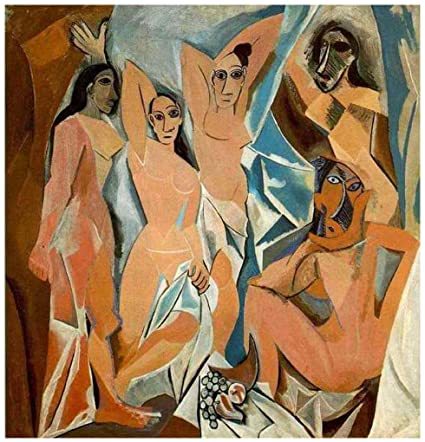
Les Demoiselles d’Avignon is undoubtedly one of Pablo Picasso’s finest work and one of the most defining artworks of the entire century. Finished in 1907, this large oil on canvas piece that measures 243.9 cm × 233.7 cm sits proud and tall in the Museum of Modern Art in New York. It features five women in various shades of peach and tan, all depicted as nude posers. Through further research, we learn that these five women are prostitutes from a Barcelona brothel. What we see in terms of style is an early version of cubism with aspects of primitivism. Three of the five prostitutes have African-like masks covering their faces. Therefore we can conclude that African, tribal masks may have well been a source of inspiration and imagery for this work in terms of style. Although denied by Picasso himself, many researchers state that Picasso did in fact visit the Musée d'Ethnographie du Trocadéro during the same period , where he could have unknowingly been influenced by the African art (Richardson). The subjects themselves however seem familiar to that of El Greco’s The Opening of the Fifth Seal. Picasso’s 1905 graphite drawing Nus seems to mirror not only El Greco’s work, but it also looks like it could be an original sketch of his Les Demoiselles d’Avignon. Jonathan Jones, a British art critic further states “What struck Picasso about African masks was the most obvious thing: that they disguise you, turn you into something else - an animal, a demon, a god. Modernism is an art that wears a mask. It does not say what it means; it is not a window but a wall. Picasso picked his subject matter precisely because it was a cliche: he wanted to show that originality in art does not lie in narrative, or morality, but in formal invention” (Jones).
Sources: Richardson, John. A Life Of Picasso, The Cubist Rebel 1907–1916. Jones, Jonathan. Pablo’s punks, The Guardian, 2007
1 note
·
View note
Text
Commission a City Print
Hey y’all, so I have been creating some maps (with watercolor paints, ink, and then digitally) for various cities. These would make really cute prints / posters. If you would like to buy a digital file (to print yourself) for 5€/each, let me know. You can also commission a city that I have not yet done, choose a size (A3,A4,A5), and have me print and ship for you. Email me for a quote if you would like at [email protected]

#map#prints#posters#art#supportartists#maps#paris#washington dc#cape town#artist#water color#digital art
1 note
·
View note
Text
The Birth of Fauvism
A Study of Matisse’s The Young Sailor II
As I walked through the Metropolitan’s exhibition gallery of Greek and Roman art, through the great hallway showcasing pieces from Africa, Oceania, and the Americas, and into the Modern and Contemporary Art galleries, I realized that within the span of three short minutes I had experienced the fastest chronological and geographical exploration of art history. Hidden towards the far back of the museum is a group of rooms showcasing a collection named “Reimagining Modernism”. It houses the paintings of everyone from Picasso to Grünewald. The smallest of the rooms, 904, is quite unlike the rest. It doesn't have a bright vibrant wall on which the paintings have been mounted. While the other rooms have walls painted in a rich burgundy or deep royal blue, 904 is a pale grey room. Upon further inspection of its contents, I began to understand the reason for the choice of wall colour: Filled with extremely vibrant artwork by Matisse, Vlaminck, Picasso, and Derain (to name a few), it would have been an eyesore to make the walls equally as colourful. It would have even taken away from the paintings themselves. The largest, most multi-coloured, and therefore loudest of all the pieces is Matisse’s 1906 painting The Young Sailor II. At first glance, I responded in shock and to be honest, slight fear. Why would Matisse choose a bright pink background for his model who is already dressed in a jarring blue and green get-up? Well, upon further research I have discovered that these colour choices are what made Matisse stand out from his fellow modern artists.
The Young Sailor II is a fauvist portrait of a young fisherman named Germain Augustin Barthélémy Montargè from a small Catalan village called Collioure (Rewald, 89). Germain is seated on a wooden chair and his facial expressions are painted in a very cartoon-like manner (Fig. 1). Although much sharper than Matisse’s first version, there is still a lot of ambiguity that is heavily present. The only sense of differentiation between the body parts or pieces of clothing is through colour choice. The painting itself is a striking palette of green, blue, pink, and orange. The face of the model does have a few details however: The eyebrows are extremely exaggerated and I even sense a playful expression being presented. Sabine Rewald, curator of Modern Art at the Metropolitan Museum states that Germain’s “theatrical looks and his colourful costume, set against the pink, candy-coloured ground, combine to make this work one of Matisse’s most decorative portraits in the Fauve manner” (Rewald, 90). The model is dressed in some sort of a bright blue jacket, green pants with a checkered printed cuff, pink shoes, and a blue-green cap. Being that Matisse has not included any details of the garments, I find myself staring at the cuffs of the pants wondering if he intended them to be boots or checkered socks instead. This sort of confusion seems to be a common reaction to Matisse’s artwork: Julia Brucker, contributor at The Art Story, states that although Matisse’s artwork “was important in endorsing the value of decoration in modern art” the manner in which he paints with his colours is frequently disorienting to viewers (Brucker). This fauvist portrait does exactly that and I suppose it is what forced me to keep staring at it until I was completely hypnotised and enraptured by it.
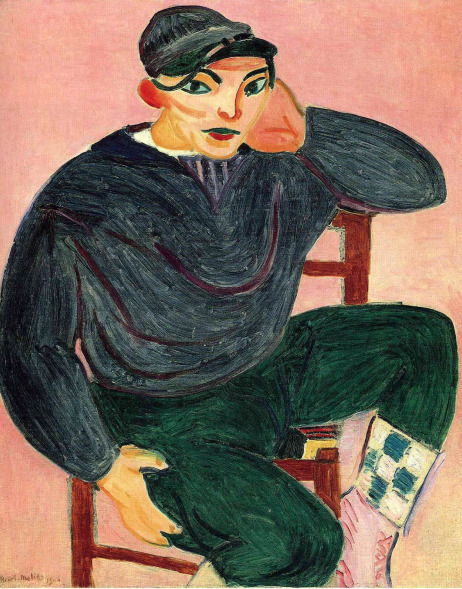
Matisse - Young Sailor II
“Fauve” was a word that kept appearing on the information plaques of 904’s paintings so I sought to discover the meaning behind this strange word. Synonymous to “grand félin féroce” or in English “wild cat”, “Fauvism” describes a movement in modern art where the artists focused on personal expression through eccentric colour use (Wolf). The artists, or “Fauves” as they were known, included Henri Matisse himself, Albert Marquet, and Georges Henri Rouault. They were inspired by the artwork of Van Gogh, Gauguin, Seurat, and Cezanne and they concentrated on the use of vibrant colours: “Matisse emerged as the leader of the group, whose members shared the use of intense colour as a vehicle for describing light and space, and who redefined pure colour and form as means of communicating the artist's emotional state. In these regards, Fauvism proved to be an important precursor to Cubism and Expressionism as well as a touchstone for future modes of abstraction” (Wolf). Justin Wolf, from The Art History Contributors specifies three key ideas important to Fauvism: Firstly, the Fauves saw the significance of colour and the atmosphere it created. Colour was in fact autonomous to the painting itself. Secondly, the Fauves drew attention to the flatness of the canvas in order to create a sense of unification in the artwork. Lastly, the Fauves focused on depicting human expression and inner emotions. Being that Matisse excelled in these three modes of painting, he was considered to be the forerunner and pioneer of Fauvism: “Synthesizing all these ideas, Matisse turned away from using subtle hues of mixed paints and began working with bright colour, directly from the tube, as a means of conveying emotion. He had been working outdoors since the mid-1890s, and his travels to Corsica and the south of France in 1898 increased his interest in capturing the effect of strong natural light” (Wolf). Looking at the painting, I see exactly what Wolf is describing. There is very little shading or colour gradient in the piece. The jacket is a flat blue with a small number of purple stripes and the pants are a solid green just as the background is a solid pink. The brush strokes are visibly large but other than that there is no sense of texture being created.
However insignificant of a fact this may seem to us, to Matisse, it was very intentional: “Rather than using modelling or shading to lend volume and structure to his pictures, Matisse used contrasting areas of pure, unmodulated colour. These ideas continued to be important to him throughout his career” (Brucker). The reason Matisse did this is because he felt it permitted him to better communicate the model’s emotion and the emotion that is depicted in the painting is one that is quite peculiar. The young man seems to be posing in a “look how fabulous I am” manner with a particularly wily look on his face. What I began to wonder while I was sat on the wooden bench in 904 staring in beguilement at this piece is how much say Matisse had in the posture or expression of the model. According to Brucker, it’s highly possible that Matisse was in fact using the model as a medium in which he could portray his own feelings by “reducing them to ciphers in his monumental designs” (Brucker). This theory seems to be proven by Matisse himself - “Matisse, by way of Cezanne and impressionism, attempted to realize his emotion in front of the object. (Matisse frankly stated in an interview of 1912: ‘I do not literally paint that table, but the emotion that it produces upon me’)” (Bock-Weiss, Matisse, 58). So now, this painting gives us much more than just a depiction of a sailor in Collioure. It gives us insight on Matisse’s life during the summer of 1906. Matisse painted The Young Sailor II while on one of his travels to the Catalan region near the Spanish border. This small village of Collioure was a frequent vacation spot of his and is in fact the birthplace of Fauvism (Brucker). Germain, the model, was one of many fisherman from this small seaside village.

Collioure, France (by journalistontherun.com)
But what exactly made Germain stand out from the eight hundred and ninety-nine other fishermen that lived in this village? According to Rewald, the Montargè family were unlike other Catalans: “Since Germain was six-feet tall and of athletic build – which is unusual for Catalans – it is not surprising that he might have caught Matisse’s eye during one of the painter’s early morning strolls along the pier in Collioure’s harbour… Another characteristic that made Germain stand out in a crowd was his Slavic features. These are shared by the Montargè family … and are still referred to, by the people in Collioure, as ‘cet air primitif’ (‘that primitive look’)” (Rewald, 89). Prior to this painting, during the summer of 1905, Matisse produced many other works of art portraying Collioure: The Open Window, View of Collioure, and Landscape at Collioure are among Matisse’s most well-known fauvist paintings. He worked alongside Derain and together they developed and refined the fauvist style (Wolf). After four months in Collioure, Derain and Matisse set off for Paris to present their work at the Salon d'Automne.

Matisse - Vue de Collioure
While Collioure proved to be the birthplace of the fauvist technique, the Salon d’Automne of 1905 is where the movement got its name: Louis Vauxcelles, an art critic who was inspecting the pieces at the exhibition used the phrase “Donatello parmi les fauves” in reaction to what he saw (Wolf). Translating to “Donatello among the wild beasts”, the word “Fauve” endured despite being disparaging. However slighting the reviews were, their portraits were bought by the likes of Leo and Gertrude Stein and Fauvism proved to be important to how colour was seen and used in the domain of modern art: “The Fauves liberated colour from any requirements other than those posed by the painting itself. "When I put a green," Matisse would say, "it is not grass. When I put a blue, it is not the sky." Art exerted its own reality. Colour was a tool of the painter's artistic intention and expression, uncircumscribed by imitation” (“Explore This Work - Henri Matisse, Open Window, Collioure”). What colour did was add meaning and context to the painting in a new and different way. Instead of asking why Matisse painted a sailor boy looking into the distance, we can now contemplate as to why the sailor boy’s ear is orange while his right hand is pink and what Matisse is trying to communicate by doing this. Before Matisse and Derain, artists were compelled to paint a blue sky, a tan face, and a red flower. Now, the artist was free to paint a red sky, a blue face, and a tan flower. Fauvism, for the first time diminished the authority the object had over how it was painted and it consequently gave way to the more successful abstract movements such as Cubism and Expressionism.
Along with painters such as his rivals Picasso and Mondrian, Matisse re-invented the way in which art was produced. By the use of simplification and color as the sole subject of painting, Matisse had a considerable influence on art and future abstract artists, proving him to be a major figure during the twentieth century. Be it Cubism, Pointillism, or Fauvism, the art of painting went through some drastic experimentation during the early 20th century and Matisse was surely an important part of it.
Bibliography:
Bock-Weiss, Catherine, and Henri Matisse. Henri Matisse: Modernist Against the Grain. Pennsylvania State University Press, 2009. p.58 Brucker, Julia. “Henri Matisse Artist Overview and Analysis.” The Art Story - Modern Art Insight, The Art Story Contributors, www.theartstory.org/artist-matisse-henri.htm. “Explore This Work - Henri Matisse, Open Window, Collioure.” National Gallery of Art, www.nga.gov/Collection/highlights/highlight106384.html. Kleiner, Fred S. Gardner's Art through the Ages: The Western Perspective. Vol. 2, Cengage Learning, 2009. P.688 Matisse, Henri. “The Young Sailor II” .Jacques and Natasha Gelman Collection, 1998. Succession H. Matisse / Artists Rights Society (ARS), New York Matisse, Henri. “The Young Sailor I” . Private Collection, 1906. Rewald, Sabine. Twentieth-Century Modern Masters: the Jacques and Natasha Gelman Collection: , Metropolitan Museum of Art. Abrams, 1989. p.89-90 Schapiro, Meyer. Nature of Abstract Art . American Marxist Association, 1937. Wolf, Justin. “Fauvism Movement Overview and Analysis” The Art Story - Modern Art Insight, The Art Story Contributors, www.theartstory.org/movement-fauvism.htm.
#MATISSE#MODERN ART#ABSTRACT ART#ART#FAUVISM#ART HISTORY#metropolitan museum of art#MET#CUBISM#POINTILISM#MONDRIAN#PICASSO#france#PAINTING#ARTIST#ESSAY#WRITER#BLOG
4 notes
·
View notes
Text
A Review of Balanchine’s “Valse Fantasie” (performed by the American Ballet Theatre)
Preface: A few years ago I wrote a performance review piece after watching American Ballet Theatre’s Valse Fantaisie . I never published it on here but I stumbled upon it today and thought that I should share. After all, it may let us all imagine ourselves at the ballet or theatre...maybe even the opera. Something that may not happen again in a very long time. So...hope you enjoy.
On October 24th, I had the privilege of watching George Balanchine’s Valse Fantaisie performed by American Ballet Theatre. Valse Fantaisie, which translates to “Fantasy Waltz”, is a mystical performance of six dancers moving to a rhythmic and joyful piece of music by Mikhail Glinka. Balanchine’s neoclassical elements are quite visible in the choreography - With no story-line to fall on, the performance relied primarily on the visual and auditory allurement of the audience. From the stunning costumes, to the lively music, and the shapes and geometry that were created on stage, Balanchine (through ABT of course) was able to successfully hook his audience. Balanchine himself has stated that “A ballet may contain a story, but the visual spectacle, not the story, is the essential element. The music of great musicians, it can be enjoyed and understood without any verbal introduction and the choreographer and the dancer must remember that they reach the audience through the eye and the audience, in its turn, must train itself to see what is performed upon the stage.” [2]

The music, made up of quick and delicate melodies in B minor, goes by the ballet’s same name and was composed by Mikhail Glinka who is Russia’s first national composer and considered to be the country’s Mozart. [1] A live orchestra made the music come alive and its echo effect (string instruments playing first and then flutes echoing the same melody after) created a hypnotizing sensation which made the performance extremely bewitching for the audience. The costumes were of course a vital cause of this enchanting atmosphere as well. They were mystical and fairy like: The five female dancers wore blue-green tutus whilst the male dancer wore a white bodysuit with blue embellishments.
Balanchine’s neoclassical elements are clearly evident in his choreography. The piece is stripped of detail and elaborate staging: “As a choreographer, Balanchine has generally tended to de-emphasize plot in his ballets, preferring to let ‘dance be the star of the show’”.[2] There is no story line and the focus is completely on the music, the dancers, and their effortless technique. Gia Kourlas from the New York Times states that the the way in which the dancers move is what contributes to the airy feel: “Balanchine’s windswept, rapturous “Valse Fantaisie,” one man, James Whiteside, and five women, with Hee Seo in the lead, twist and turn to Glinka’s music as if their bodies were controlled by the air. It’s over before you know it: After four women exit, the leads leap into opposite wings”.
Male lead, James Whiteside, displayed extreme athleticism and precision. Before joining American Ballet Theatre in 2012, Whiteside danced with Boston Ballet under instruction of director Raymond Lukens.[4] Female lead, Hee Seo, was trained in South Korea before joining American Ballet Theatre in 2004.[5] The corps consisted of Lauren Post, Melanie Hamrick, Paulina Waski, and Brittany De Grofft. Balanchine purposely chose four female corps de ballet members to dance without male partners in order to create his ideal choreographic structure on stage: “Balanchine offers a highly distilled treatment of one of his perennial themes… a solitary male has not one but several women to choose from. Another choreographer might have paired off the other women with partners, but Balanchine catches us off balance here. The man dances with a ballerina but he also dances in a frame of four other women. They are a miniature corps and an amplification of an ideal female. At the end, there is no lasting encounter. Everything vanishes - the soloists are swept off stage and the two principals leap out in opposite directions.”[6]

There were a variety of different choreographic structures present throughout the nine minute long piece. Valse Fantaisie, being that it is a waltz performance, involved steps done in triple time such as pas de valses, ballancés, and a few series of pas de bourrées. Although the choreography was neoclassical, there were still many similar elements to the classical Cecchetti technique that I trained in. Because there were four female dancers part of the corps de ballet, and two lead dancers (one male and one female), there were a lot of circular pathways constructed by the corps which existed to highlight the two principal dancers. There were also many frequent exits and entrances: Sometimes, only the corps would be present on stage (usually performing a pas de quatre) and whenever the music would crescendo, the two principles dancers would appear and the corps dancers would exit leaving the principal dancers to perform a romantic pas de deux. And when all the dancers were present on stage, it usually involved the corps standing in a circle performing balancés around the principal dancers who were executing something more technically complex. For example, at one point in the performance, the corps executed balancés in a circular pathway around the lead dancers. While the corps were performing these balancés, the lead dancers did piqué arabesques across the floor. Sometimes, the corps would also dance behind the principal dancers and mimic the very same movements.
Although the ballet seems to have received mostly positive responses so far, there have been critiques made in terms of the casting. Kourlas for example, believes that Whiteside and Seo did not fully meet the demands of the piece: “Valse Fantaisie is a tale of speed and drive; Mr. Whiteside handled Ms. Seo admirably, but was given to stiffness in his solos, and Ms. Seo, in blue, started strong and faded in momentum”. [3] Perhaps, this is because American Ballet Theatre rarely does works by Balanchine and so the dancers may not be as accustomed to the Balanchine method. It is also, just the very beginning of the season. Overall, I think the performance was outstanding: The costumes, the music, the choreography all perfectly synced together and created a very fantastical feel.
To watch a 1973 version of the dance, click here.
1 "New York City Ballet - Home." NYCB. N.p., n.d. Web. 5 Nov. 2015. from http://www.nycballet.com/ballets/p/pas-de-trois-(glinka).aspx 2 George Balanchine - ABT. (n.d.). Retrieved October 28, 2015, from http://www.abt.org/education/archive/choreographers/balanchine_g.html 3 Kourlas, G. (2015, October 25). Review: Choreography Is the Star at American Ballet Theater. Retrieved October 28, 2015, from http://www.nytimes.com/2015/10/26/arts/dance/review-choreography-is-the-star-at-american-bal let-theater.html?_r=0 4 "AMERICAN BALLET THEATRE: JAMES WHITESIDE." AMERICAN BALLET THEATRE: JAMES WHITESIDE. N.p., n.d. Web. 10 Nov. 2015. http://www.abt.org/dancers/dancer_display.asp?Dancer_ID=300 5 "AMERICAN BALLET THEATRE: Hee Seo." AMERICAN BALLET THEATRE: Hee Seo. N.p., n.d. Web. 10 Nov. 2015. http://www.abt.org/dancers/detail.asp?Dancer_ID=155 6 Kisselgoff, Anna. "BALLET: 'VALSE-FANTAISIE'" The New York Times. The New York Times, 30 Apr. 1985. Web. 8 Nov. 2015. http://www.nytimes.com/1985/05/01/arts/ballet-valse-fantaisie.html Photos: Courtesy of Marty Sohl
#balanchine#ballet#american ballet theatre#performance#theatre#dance#dancer#performance review#ballerina#new york
2 notes
·
View notes
Text
wisteria ~ by nicole maria
Okay... so for the last 5-6 years I have been writing quite a bit of poetry and of course doodling and taking pictures to go along with it. For the longest time, I told myself that these poems would be just for me and no one else but during the last year, I started showing them to only a couple of really close friends and they encouraged me to “publish” them. And so, I have compiled a few of these poems (that hopefully tell an interesting story) and illustrations and made them into a book. For the 5 people who actually read this blog, you will know that I have already posted a few poems on here so you have a taste of what wisteria will be like. For the others, wisteria is about a girl trying to overcome some really hard stuff and trying to find her home in this world. For now, home is Paris (may or may not be inspired by my life lol) but who knows where else she may go. In any case, I hope you will take a chance and support me by buying a copy on my Etsy shop.
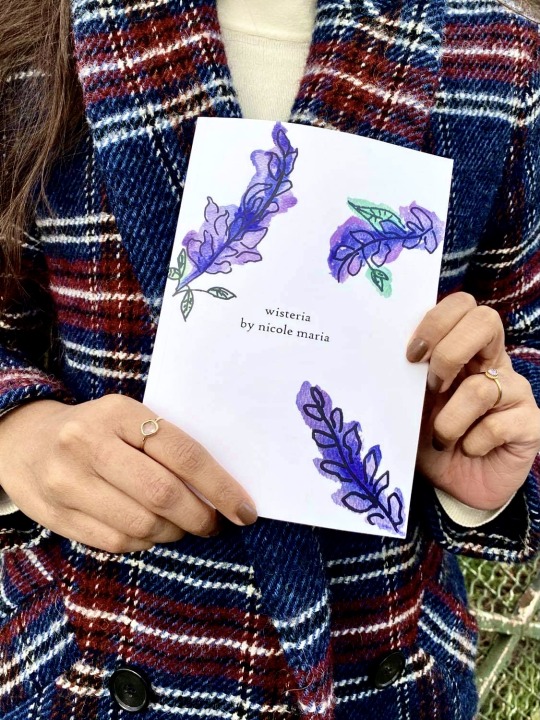
... and just like wisteria, she grew and spread out her wings. out of her dark adolescence, she has now found her home. these poems depict just that.
1 note
·
View note
Text
Paris Map Print
In addition to my “Paris Collection” postcards that I am selling on ‘Ma Belle Flânerie’ Etsy Shop, I have decided to sell a print of a map of Paris that I created using ink and watercolor before digitalIy playing around with it. I hope you take a look and consider making an order :)

1 note
·
View note
Text
The Regency Period
Thanks to Netflix, I think it is safe to assume that most of us here have feasted our eyes and opened our hearts to the dramatic relationship between the incomparable Daphne Bridgerton and handsome Simon Bassett, Duke of Hastings. I do have to say, though, that Penelope Featherington was by far my favorite character. Inspired by their story, way of dressing, and manner in which they speak, I decided to play Lady Whistledown and examine Regency culture - the food, fashion, and society. Here is some of what I have learned (mind you, that what I write is just enough to give a little more insight into the culture behind the tv show and in no way a history lesson).
Society
This was a period in Great Britain between 1811 to 1820 when the prince-regent George IV was ruling the empire. It is also the era of English literature’s most famous writers Jane Austen, Lord Byron, Mary Shelley, Wordsworth and Keats...to name a few. The period was known for its many Lady Whistledowns who exposed and spread rumors and gossip about the country’s elite. It was also a period when a woman’s greatest achievement was finding a suitable husband and then becoming his baby-making machine.

Women’s Fashion
When we think of “olden day” fashion, or anything before the early 19th century. one would imagine big puffy dresses, high necklines, extremely corseted waists, and outlandish hairstyles. And yes, while this was what was worn throughout the 1800s by many women, the on-trend regency girl seemed to don something a little less extreme and a little more subtle. Why? Well thanks to the French Revolution, women, especially in France wanted to appear more like the working-class and less like the aristocracy. French fashion, which eventually spread elsewhere, began to emphasize a more natural figure with light loose fitting dresses inspired by neo-classical Greek and Roman styles. With a lower neckline, everything below the bust was loose-fitting. This “empire silhouette” was seen throughout the regency era, though it is important to note that in the end age, status, and occasion decided what kind of dress was the most appropriate. That is why, in Bridgerton, we see the older women of the aristocracy, including Queen Charlotte, wearing the much larger gowns with more extreme silhouettes while their daughters, the young girls and women coming out into society hoping to land a husband, sported the simple, yet beautiful regency frocks.

Tea?
It's been noted that Jane Austen had toast for breakfast at around 9am. One would usually have some version of bread with butter for breakfast and then wait for dinner. Dinner, or high tea as some called it, was a heavier meal and could be served at 8pm, 3pm or even 6pm. It could be what we consider lunch. Afternoon tea was served to relieve hunger before dinner and Evening tea was served a couple hours after dinner before people gathered to play card games and charades. Tea between an unmarried man and woman (or any interaction in fact) always required a chaperone to maintain a young woman’s honor and integrity. Couples were only allowed to spend some time alone once they had become engaged. None of it seems to make much sense but what we can be sure of is that tea was highly important in Regency society.

Sources https://en.wikipedia.org/wiki/Regency_era https://www.fashion-era.com/regency_fashion.htm https://janeaustensworld.wordpress.com/tag/food-in-the-regency-era/
24 notes
·
View notes
Text
My “Paris Collection” Postcards
As the job-search continues and will probably keep prevailing due to the current terrible context we live within, I have decided to go on a new business venture in order to make a little $: selling postcards. My love of postcards is no secret. I collect them during my travels, I make them, and I send them to loved ones quite often. So, with all the marvelous pictures of beautiful Paris that I have been taking over the years, why not create some of my own and sell them? This is the first time I am doing such a thing and I have only just made my first sale.
I am already learning a lot such as making sure that next time I need to sell them for more money than it takes to actually produce and deliver them. smh! And so, for now, it looks like I may be loosing money rather than making it but it is still quite fun and hopefully soon, very soon, when I learn all the ins and outs of this business, it will turn out to be rather profitable. And therefore, I introduce to you, my “Paris Collection” Postcards on ‘Ma Belle Flânerie’ Etsy Shop. I hope you take a look and consider making an order. They are sure to make great little gifts for loved ones or even add to a cute stationery collection.
XX
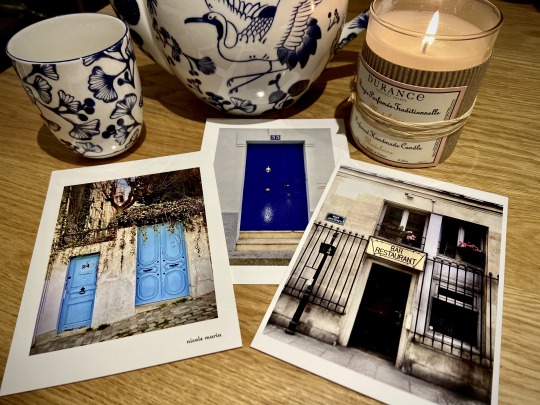


1 note
·
View note
Text
faithful echoes
i hear a sweet wind but in it a trace of sadness i see the glimmering sea roaring in grief take me closer so i can bathe in faithful echoes of wind and sea once the sadness is broken by song ~ nicole maria
6 notes
·
View notes
Text
dream winter and stars. a sweet darkness. rays covered in night. dream you and me. humming a blissful melody. surrounded by beauty. dream silence and peace. a quiet sleep. with doves flying high above us. and when we awake. we’ll branch out into the light. and bathe in the pouring air.

~ nicole maria
2 notes
·
View notes
Text
botswana
i remember sunsets that looked like the world was lit on fire
i remember infinite birds swirling and billowing around a magically painted sky
i remember the darkening silhouettes of baobab and acacia trees against sapphire heavens
i remember fierce thunderstorms and magnetic lightning bolts that eclipsed the beats of the african drums

photo by Andrew Beck
0 notes
Photo
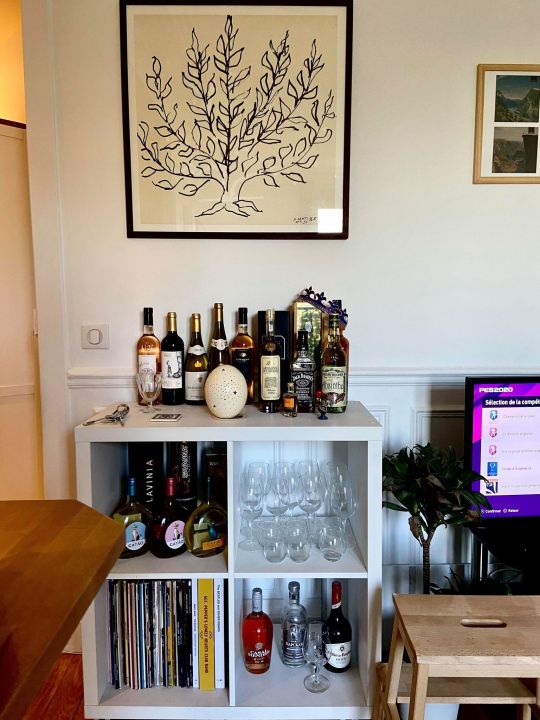




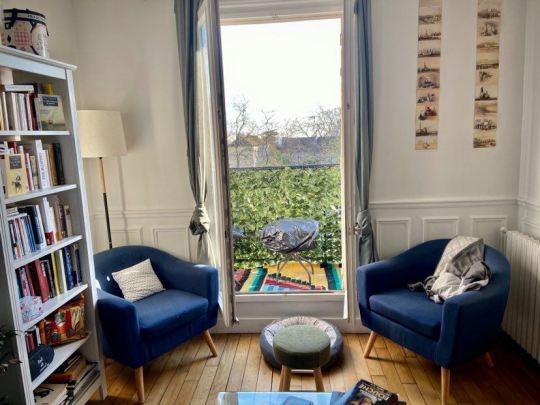


My Home If you asked me what my dream job is, I would say “interior designer”. The minute I walk into a space, be it a friend’s home or even a hotel room, I immediately start envisioning the way I would decorate and lay out all the furniture. My mind wont stop. Even with my home, as you will see in the photos above, things are always changing and evolving.
2 notes
·
View notes
Text
colorful disasters
colorful disasters i sleep in the dust scared hungry in another country on an unreliable map out of whose dream the other’s mine chases his dream chases mine under what skies in the late night i see blue, purple, and white
~by nicole maria

0 notes
Text
Down South for the Summer
Paris during the summer? Not a chance. I needed the sea, the wind, and the sun... and so I went down south and had a wonderful little holiday by the Mediterranean. If you want to share in the wonderful sites I saw in Marseille, the Calanques, and Aix-en-Provence, click click click. Bisous xxx
Marseille
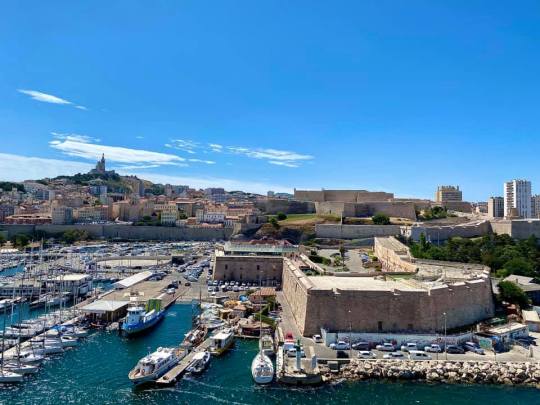
The Calanques

Aix-en-Provence
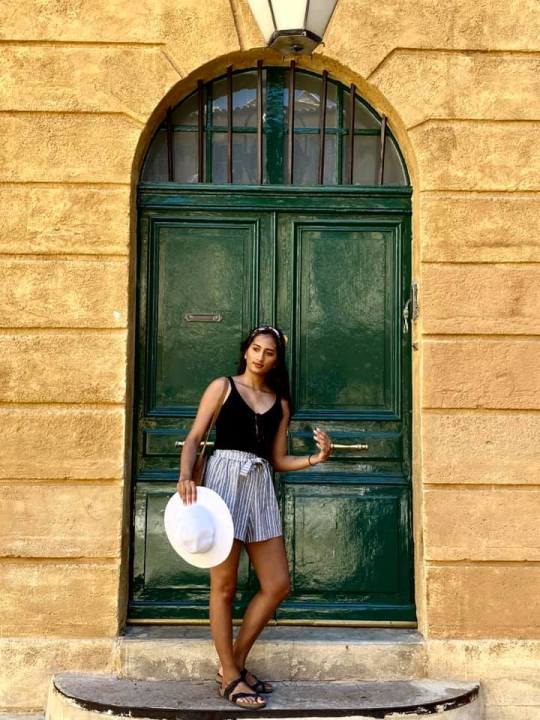
0 notes
Text
We Need to Talk About Hortense Mancini!
It has been a while since I’ve written but I am back now and with a story full of laughs and maybe a bit of sadness.
This is about an incredible 17th century woman called Hortense Mancini, Duchess of Mazarin. She came to my attention when I was listening to my favorite podcast “Queens Podcast” which explores extraordinary women throughout history. I listened to her story, narrated by Katy and Nathan, in a quiet Parisian metro on my way to work one day and I could not stop myself from giggling out loud. The two hosts compare Hortense and her sisters, known as the Mazarinettes, to the Kardashian sisters. If “17th century Kardashians” doesn’t have you hooked I’m not sure what’s wrong with you. They too, were popular socialites known for their beauty and scandal and with that they took the European courts by storm during the 1600’s. Hortense, however, is the most famous and perhaps the most scandalous of the group. Actually... she is certainly the most scandalous and definitely the most interesting. Her story is incredible and filled with so many adventures and escapades.

I’m not going to attempt to unpack all of the fascinating stories this woman has to offer. You’ll need to listen to Katy and Nathan for that. What I will be doing is trying to lure you down a rabbit hole of self-research by giving you a few of my favorite anecdotes .
Hortense was born to an aristocratic Italian family but moved to Paris with the rest of the Mazarinettes to find some rich husbands. At fifteen...yes fifteen, she was married to a horrible little man called Armand de la "something". He was abusive, prude, and cretinous and he now had all the wealth, land, and art that came with marrying Hortense. This man did some disturbing things such as monstrously removing the teeth out of all his female servants to make them unwanted by men. He ruined so many pieces of precious art, mainly by senselessly cutting off or painting over any private parts. Also... he did not allow his milk maids to milk the cows because he found this act a bit too sexual.
As you can imagine, Hortense, who was used to the lively court life of Paris (yes she lived in the Louvre), was suffocating greatly in rural France under Armand’s puritan control. Armand, who was extremely jealous and paranoid would often walk into Hortense’s room during the middle of the night to make sure she didn’t have any lovers with her. Eventually, during one of his raids, he did find someone. Though, it was not a man but rather another woman in bed with Hortense. Of course the two young girls were sent off to live in a convent as punishment. I have a feeling that Hortense, who was extremely intelligent and full of life, actually preferred life with nuns rather than with Armand. Unfortunately, she was thrown out by the nuns not long after for having played too many pranks on them. The worst probably being that she put ink in the holy water then flooded a nun’s bedroom. I love this woman!!!

The Mazarinettes.
After being sent back to live with Armand in the countryside, Hortense, dressed as a man, planned to escape (twice in fact as the first time was not successful) with the help of her brother. Apparently, it wasn’t that rare to find Hortense cross-dressing. Everyone knew who she was so it was more of having fun in drag rather than being in disguise. With all her assets under her husband’s control, she eventually went to live with her sister Marie in Italy who was also dealing with an abusive husband at the time. Hortense then made her way to England, once again dressed as a man, and became the mistress to King Charles II. Although not a teenager anymore, Hortense continued to live a life full of scandal and excitement: She had a very public affair with Charles’ daughter (yuppp) and the Prince of Monaco. Clearly, she wasn’t afraid of expressing her bisexuality in 17th century England and clearly she wasn’t afraid of being the lover of both father and daughter at the same time (yupp). With the Prince of Monaco however, the king became quite angry about the affair (for political reasons I will not understand) and revoked her allowance. Not sure why he didn’t react this way when she was with his 15 year old daughter. Only 3 days later, the persuasive Hortense managed to convince him to overturn his decision. She was pardoned by the king and continued to live quite comfortably and scandalously organizing salons for intellectuals and gambling her way away.
Towards the end of her life, Hortense and her sister released a memoir that put into light the actions of their abusive husbands. Even after her death, Armand continued to show horrifying behavior (he traveled around Europe with her corpse propped up in his carriage). Umm so yeah...I have no more words only that I wish more of us could be as brave, adventurous, and unashamed as Miss Hortense. May she rest in peace and may Armand... not.

Hope you enjoyed!
Sources: https://en.wikipedia.org/wiki/Hortense_Mancini Queens Podcast: Hortense Mancini Part 1 & 2 http://www.historiamag.com/charles-iis-last-mistress/
0 notes
Text
My Mama’s Chocolate Yogurt Cake
As a lot of us seem to be quarantine baking quite a bit during this epidemic, I’ve noticed a lack of flour and other baking needs at the supermarket. Last week I did manage to grab a bag of flour as I walked into the store at just the right time; They were stocking up the shelves and I happened to have a sudden craving for my mama’s chocolate yogurt cake.

This cake is so light and fluffy, it feels like a cloud in your mouth. I had to bake it three times in order to get it perfect as the oven temperature and amount of bicarb may need to be adapted to your ingredients and oven-type. Either way, my photos enticed enough of my friends who pounded me for the recipe and so I thought I would share it on here for all to enjoy.
Ingredients: 500ml flour 375ml sugar 2 eggs 8ml bicarbonate of soda 5ml vanilla 125ml oil 125ml yoghurt 250ml water 60ml cocoa 125ml butter
Method: In a bowl, combine the flour and the sugar. In a separate bow, beat the eggs, bicarbonate, and vanilla. In a saucepan, combine the oil, yoghurt, water, cocoa, and butter and heat gently till melted. Now combine dry ingredients, eggs,, and melted mixture. Mix well and pour into a greased and lined tin (20 cm deep) at 160 degrees celsius for 30-40 minutes.
I had to increase the temperature to 180 during the last 10 minutes in order for the center to cook. Add a bowl of water in the oven too so that cake bakes more evenly. It may take a few tries for the texture to be perfect but it will taste delicious each and every time. So keep baking!!!
0 notes